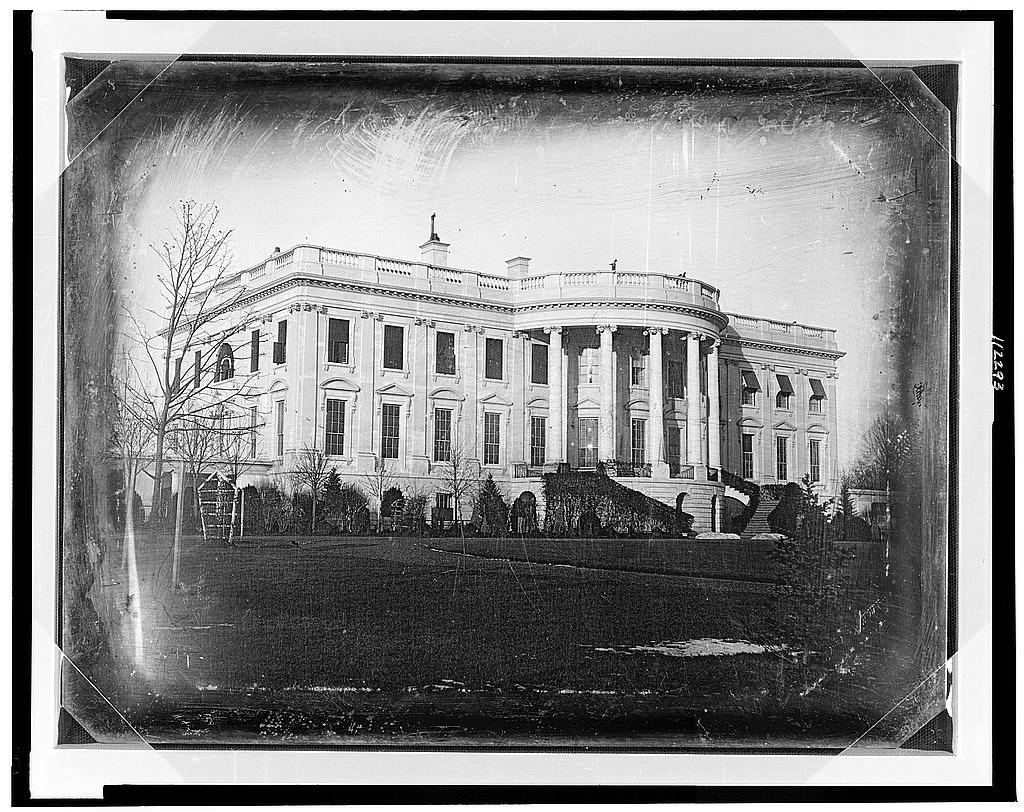Part of a series of articles titled The Odyssey of Ulysses.
Previous: Grant at Appomattox Court House
Next: Grant and Yellowstone
Article

Library of Congress
Ulysses S. Grant began his residence at the executive mansion, now called the White House, on March 4, 1869. Flanked by regiments of Civil War veterans, including African American soldiers, his inauguration parade led him through cold and damp weather to Capitol Hill.
His inaugural address included two controversial topics: the treatment of American Indians and the right to vote for black citizens. Grant's inaugural address was well received by the American press and citizens. Although his speech lacked the rhetoric of a practiced politician, the public clearly understood Grant would be as courageous a President as he was a General.
At the time, Washington, D.C. was mostly undeveloped, and the summer dust and winter mud made the city nearly impossible to visit. During Grant’s presidency, Washington, D.C. developed at an incredible rate. Sidewalks were paved, trees planted, more streetlights installed, and the sewer system expanded.
At the same time, First Lady Julia Dent Grant renovated the White House, both physically and metaphorically. Throughout the Civil War, the White House was a grim, solemn building. Now, the property was the epicenter of a thriving social scene and hosted dinners, balls, and parties.
President Grant faced the challenge of Reconstruction, a turbulent time as the country struggled with reunification. Grant championed the rights of black citizens and helped pass the Fifteenth Amendment, which gave male citizens the right to vote regardless “of race, color, or previous condition of servitude.” He balanced restoring peace with formerly Confederate states while also aggressively prosecuting the newly formed Ku Klux Klan.
During his tenure, Grant appointed a record number of Jewish and black men to office, helped create the Department of Justice and Board of Indian Commissioners, and stabilized the economy. His foreign policy positioned the country to be a champion of human rights. However, his presidency was tarnished by several corruption scandals, and his Reconstruction efforts began failing in his second term.
“I thought I could run the government of the United States, as I did the staff of my army. It was my mistake, and it led me into other mistakes.” -Ulysses S. Grant
Today, the White House and surrounding grounds are preserved as President's Park. The Visitor Center features artifacts, interactive exhibits, and a video. You can wander outside the White House fence to see statues and memorials. Contact your Member of Congress or embassy to request a tour.
The Odyssey of Ulysses explores the saga of U.S. Grant from his first battle to his final resting place. For information on this Article Series project, contact us.
Part of a series of articles titled The Odyssey of Ulysses.
Previous: Grant at Appomattox Court House
Next: Grant and Yellowstone
Last updated: March 31, 2022